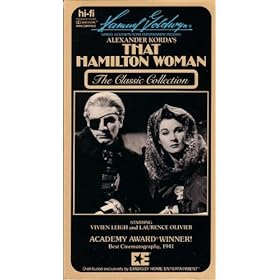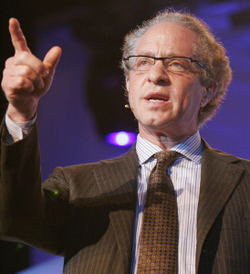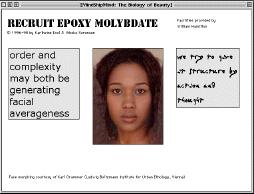Differences from commercial publishers Vanity publishers typically offer
contracts that strongly favor the publisher, charging high fees while providing low-quality books. They often sell worthless add-on services related to editing and marketing, and are frequently charged with outright
scams.
A
self-publisher is an author who also undertakes the functions of a publisher for his or her own book. The classic "self-publisher" writes, edits, markets and promotes the book themselves, relying on a
printer only for actual printing and
binding. More recently, companies have offered their services to act as a sort of agent between the writer and a small printing operation. In these cases, the distinction between self-publishing and vanity publishing is less obvious than it once was.
The most recent incarnations of vanity presses make use of
print on demand technologies based on modern digital printing. These companies are often able to offer their services with little or no upfront cost to the author, but they are still considered vanity presses by many writers advocates. Vanity presses earn their money, not from sales of books to readers like other publishers, but from sales of books to the authors. The author receives the shipment of books and may attempt to resell them through whatever channels are available.
Business model Writers considering
self-publishing often also consider directly hiring a
printer. According to self-publisher and
poet Peter Finch, vanity presses charge higher premiums and create a risk that an author who has published with a vanity press will have more difficulty working with a respectable publisher in the future.
Some vanity presses using
print on demand technology act as printers as well as sellers of support services for authors interested in self-publishing. Reputable firms of this type are typically marked by clear contract terms, lack of excessive fees, retail prices comparable to those from commercial printers, lack of pressure to purchase "extra" services, contracts which do not claim exclusive rights to the work being published (though one would be hard pressed to find a legitimate publisher willing to put out a competing edition, making non-exclusivity meaningless), and honest indications of what services they will and won't provide, and what results the author may reasonably expect. However, the distinction between the worst of these firms and vanity presses is essentially trivial, though a source of great confusion as the low fees have attracted tens of thousands of authors who wish to avoid the stigma of vanity publishing while doing just that.
Alternatives to vanity publishing The typical
library avoids stocking self-published books, since most vanity publications have not gone through selection, revision, copyediting and other critical steps which are normal for commercial for-profit
publishers. Most libraries will not accept such vanity publications, even when they are offered free of charge, since even then there are costs involved: all library books have to be described in a
catalogue, and require classification stickers and other elements as well as valuable shelf space. In any case, it is usual for books to be chosen for a library by the application of a
collection development policy designed to meet the needs of a particular user community, and vanity publications only rarely meet those needs.
On the rare occasions when libraries accept the product of a vanity press, they usually require the donor to sign a form giving to the library the right to do what it pleases with the item. The item is sometimes then disposed of in a yearly book sale or by some other process for the distribution of unwanted items.
Exceptions include local histories, which are of specialized interest enough to be uninteresting to commercial publishers but which are sought out by libraries.
Many libraries and reviewers do not clearly distinguish between vanity publications and self-publications, and are apt to decline or resist any book that does not come from a commercial press. Indeed in some cases any book produced using POD technology encounters such resistance, even if it is from a small commercial publisher.
Libraries It should be noted that in the nineteenth and early twentieth century it was common for legitimate authors, if they could afford to, to pay the costs of publishing their books. Such writers could expect more control of their work, greater profits, or both. Self-publishing was not judged negatively as it has been more recently. Among the authors taking this route to publication was
Lewis Carroll, who paid the expenses of publishing
Alice's Adventures in Wonderland and most of his subsequent work. Such authors as
Mark Twain,
Zane Grey,
Upton Sinclair,
Carl Sandburg,
Edgar Rice Burroughs,
George Bernard Shaw,
Edgar Allan Poe,
Rudyard Kipling,
Henry David Thoreau,
Walt Whitman, and
Anais Nin also resorted to self-publication for some or all of their works. It is worth noting, however, that despite the well known names on this list, not all of them were successful in their publishing ventures. Mark Twain's, for example, led to bankruptcy.
History Umberto Eco's novel
Foucault's Pendulum discusses the inside workings of a vanity press operated as a side operation of a more orthodox publisher, to pump out otherwise unpublishable personal musings on the
occult. The 'main' publisher is run by a Signor Garamond, named for a
renowned sixteenth century printer, while the vanity press is called 'Manutius', the name of
another famous sixteenth century printer. Elaine Viets's novel
Murder Between the Covers involves a self-published author attempting to set up a bookstore signing. The hero of
Jonathan Coe's novel
What a Carve-Up is commissioned over a long period to write a book by an otherwise vanity publisher. The company is satirized at some length. One of the substories of
David Mitchell's 2004 novel
Cloud Atlas is about Timothy Cavendish, a vanity press publisher. In
Martin Amis's
The Information, unsuccessful novelist Richard Tull works part-time at a vanity press, work he finds soul-destroying but (relatively) lucrative.
 Vanity presses in fiction
Vanity presses in fiction The following businesses have been described as using a vanity press or similar business model by independent sources:
American Biographical Institute See also

 Notable members
Notable members
 History
History




 Civil status and former extent of the area
Civil status and former extent of the area
 Continuing usage of "climax"
Continuing usage of "climax"
 Meat and game
Meat and game

 Promotion of renewables
Promotion of renewables History
History

 Vanity presses in fiction
Vanity presses in fiction